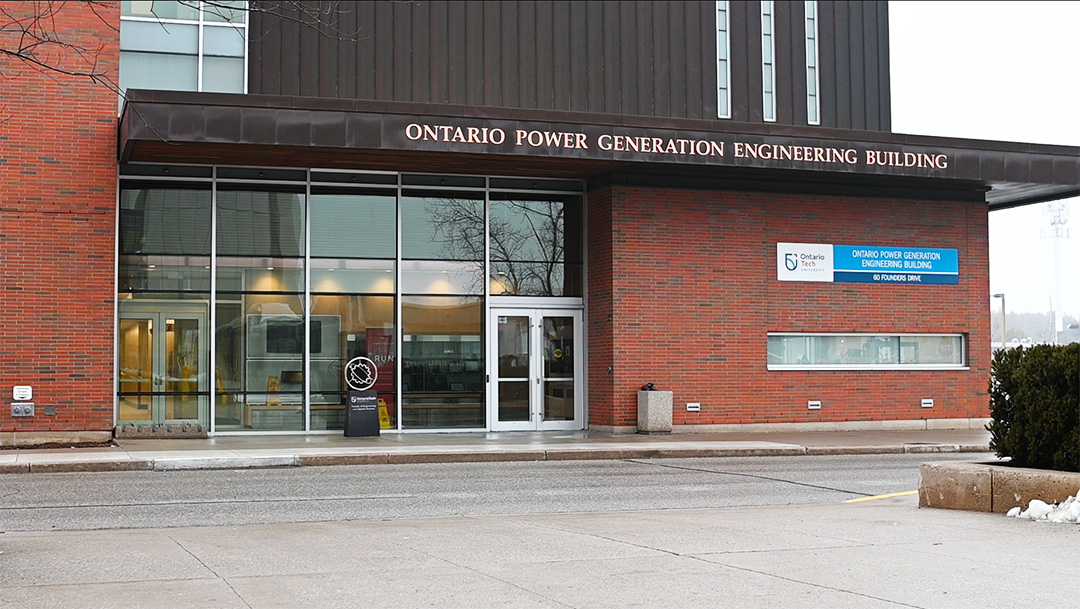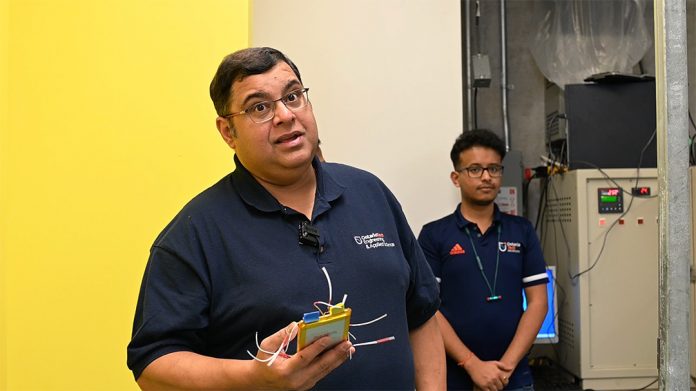What does it take for a young university to make a name for itself when it comes to research?
Ontario Tech University might have figured it out. It was recently named “Undergraduate Research University of the Year” by Research Infosource, an outlet that analyzes Canada’s research and development landscape.
Vice-president of Research and Innovation Les Jacobs said it’s the 21-year-old university’s strategy that sets it apart.
He said Ontario Tech spends a lot of time listening to industry, community and government.
“And we calibrate our research in response to what we hear,” Jacobs said. “So we, in effect, pull in all in all sorts of information early on and calibrate… our research and we found that it’s been incredibly effective.”
The university scored highest in the ‘Publication Intensity’ category, which awards points for the number of publications per faculty.
Professors such as Robyn Ruttenburg-Rozen, a professor in the Faculty of Education, credits the university’s generous funding strategies for emerging scholars.
She received a grant from the New Frontiers in Research Fund for her research in supporting women in STEM.
“One of the things with Ontario Tech is I’ve been funded a lot and it’s because of the support that they’ve had,” Ruttenberg-Rozen said. “And I don’t think this would have happened anywhere else.”
She said once she figured she could go for a sizeable grant, there was strong support from the administration.
MacLeans also ranked Ontario Tech in their top 10 primarily undergraduate universities this year. The annual ranking also noted that Ontario Tech was the number one school for social sciences and humanities grants.
The partnerships that Ontario Tech University fosters with other organizations can be key to finding research opportunities. Winnie Sun is associate professor in the Faculty of Health Science.
She said the strategy of building capacity for research in undergraduate students is key to fostering unique ideas in the future.
“We wanted to have these undergraduate students to be innovative, thinking outside the box and, you know, developing some research questions that would actually make a big impact on the patient care in the future,” Sun said.
Her research is heavily community focused, which makes the research possible.
“I’m very grateful for all the partnerships that I was able to build in the past few years to make all the research that is possible,” Sun said.

Jacobs said that they first built this strategy when they thought automakers would be able to go to the university for research in the growing electric vehicle field.
“We’ve taken a facility like ACE (Climactic Wind Tunnel), which six or seven years ago was a traditional wind tunnel, broadly servicing the combustion engine automotive sector,” he said. “Now at the centre of almost everything that ACE does is the issue about energy and mobility.”
Professor Sheldon Williamson is working on automotive technology research. His students study EV batteries and how to maximize their efficiency.
He credits president Steven Murphy and the dean of his faculty, Hossam Kishawy, along with the facilities.
“A tremendous support in terms of lab space, in terms of financial support, in terms of leveraging the chair position into other grants and funding agencies,” Williamson said.
Jacobs said the engineering department and its auto industry integration set the blueprint for further research during his early years, and it’s still working for the university today.
However, Williamson said there’s still work to be done.
“It’s a big mountain to climb. The way I see it, we’ve only just begun, and we’ve begun on the right foot for sure,” he said.




